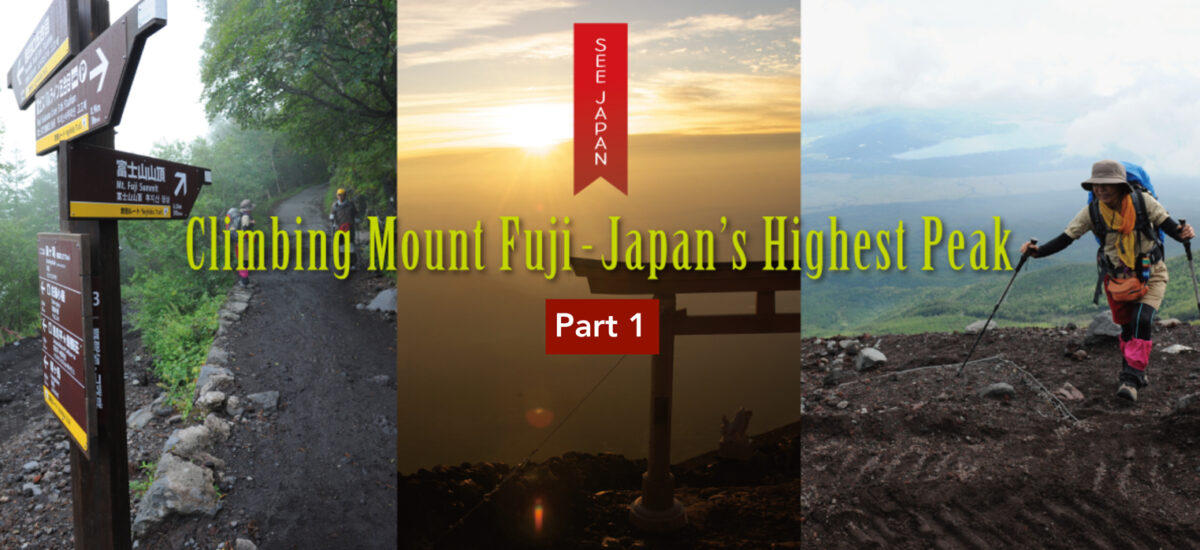
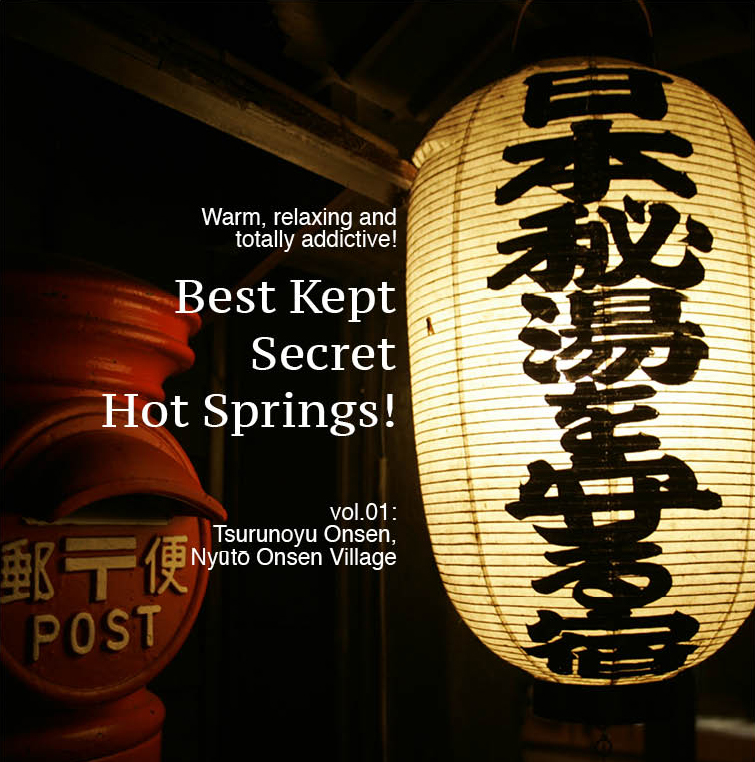
As beautiful as Mt Fuji appears from afar, nothing compares to the views from the summit. Witnessing the rising of the sun from the top of Japan’s sacred mountain is well worth the challenge of climbing this most iconic of all volcanoes.
Text : 栗山ちほ Chiho Kuriyama / Photos : 金子雄爾 Yuji Kaneko / English Version : Judy Evans
Keyword : Hiking / Mountain Climbing / Mount Fuji / Yoshida Trail / Mountain Hut
Day 1 – From the 5th Station to a Mountain Hut Near the Summit
We set out to climb Mt Fuji in mid-September, a time when Tokyo was still in the grip of the late summer heat. The crowded high season had passed, meaning we were able to climb in a relatively relaxed frame of mind. Being autumn though, and despite the high temperatures lingering in the cities, the wind on Mt Fuji’s was decidedly chilly.
We chose to climb the Yoshida Trail, the least steep of the four climbing routes, and to spend the night in a hut as close to the summit as we could get (at a point between the 8th and 9th Stations known as hachi-gō go-shaku – essentially, the ‘8.5th’ Station). We then climbed through the wee small hours and got to the summit in time to witness the go-raikō (sunrise from Mt Fuji). Most of the mountain huts had already closed for the season, but a few on the Yoshida Trail were still open for business.

Climbing against a backdrop of the most extraordinary scenery

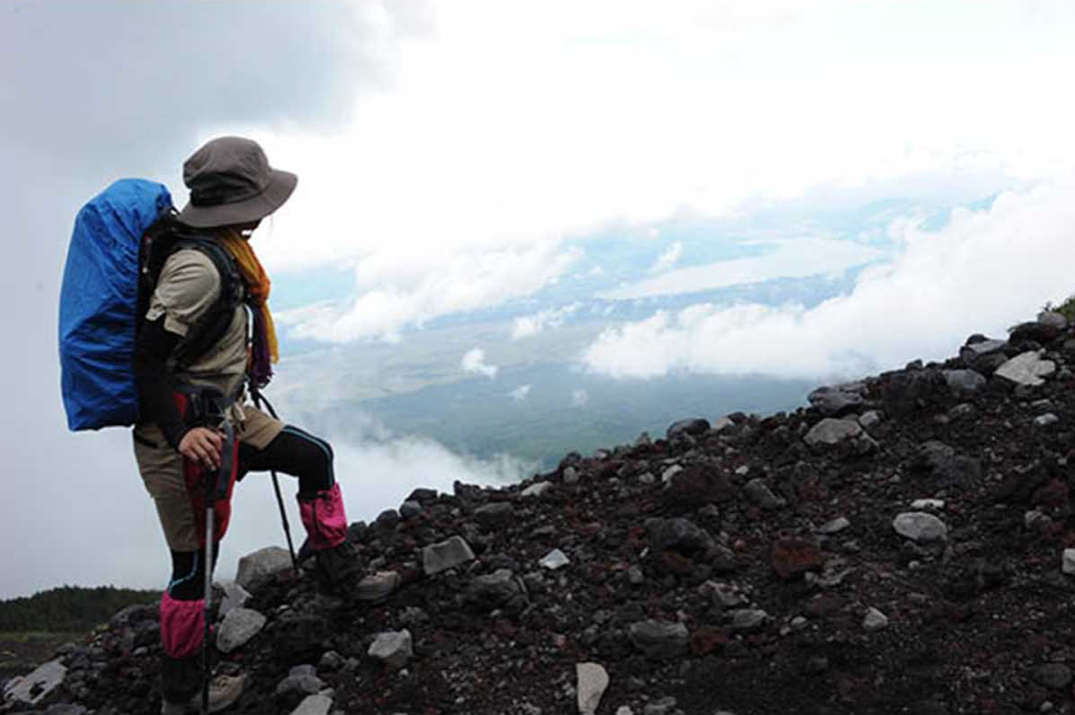
We drove as far as the 5th Station on the Fuji Subaru Line toll road, where the Yoshida Trail begins. This point is easily accessed by buses and private vehicles and there was an unmistakable tourist buzz about the place, with lots of visitors here for sightseeing in addition to those who had come to climb Mt Fuji. This spot is already more than 2,000 metres above sea level, so we take our time getting ready here to let our bodies get used to the altitude. At 9:00 in the morning, leaving the tourists far behind us, we embark on our climb.
Finding strength in the embrace of this sacred mountain
Above the tree line (2,400-2,600 metres elevation being the upper limit of tree growth) the sun beats down mercilessly, making us extremely hot. However, the air temperature drops as we get higher and if we stop to rest, the cold air chills our sweat, making us cold. Most of the trail is sand or gravel, with the occasional steep rocky area. Extra care is needed if it has been raining, as the rocks get slippery.

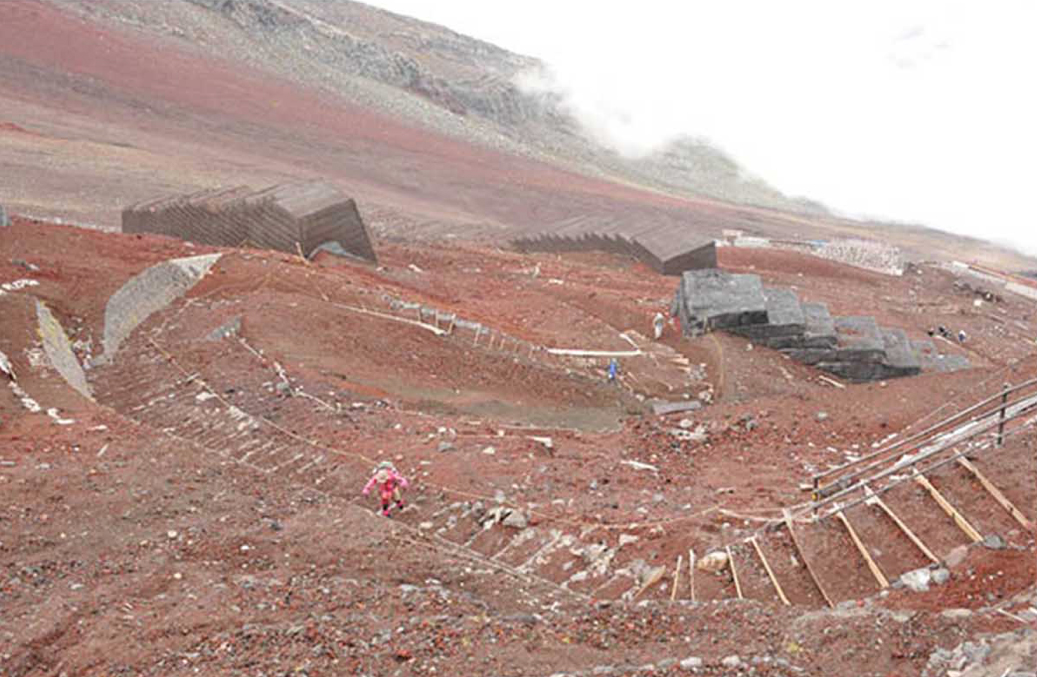
At a height of around 3,000 metres, as we continue past the huts of the 7th Station, the air gets thinner and it becomes harder to breathe. We inch our way up the mountain, ticking off the milestones as we go – past the 8th Station, past the Old 8th Station, past the hachi-gō go-shaku point. I keep looking up to see if I can catch a glimpse of the hut we plan to stay in.
We’ve been climbing for six hours when we finally reach our hut, the Goraikō-kan. At an elevation of 3,400 metres, the Goraikō-kan is the nearest hut to the summit of Mt Fuji. We breathe sighs of relief mixed with awe once we get to the hut – not only to have made it this far, but also at the beauty of the panorama that unfolds below us.
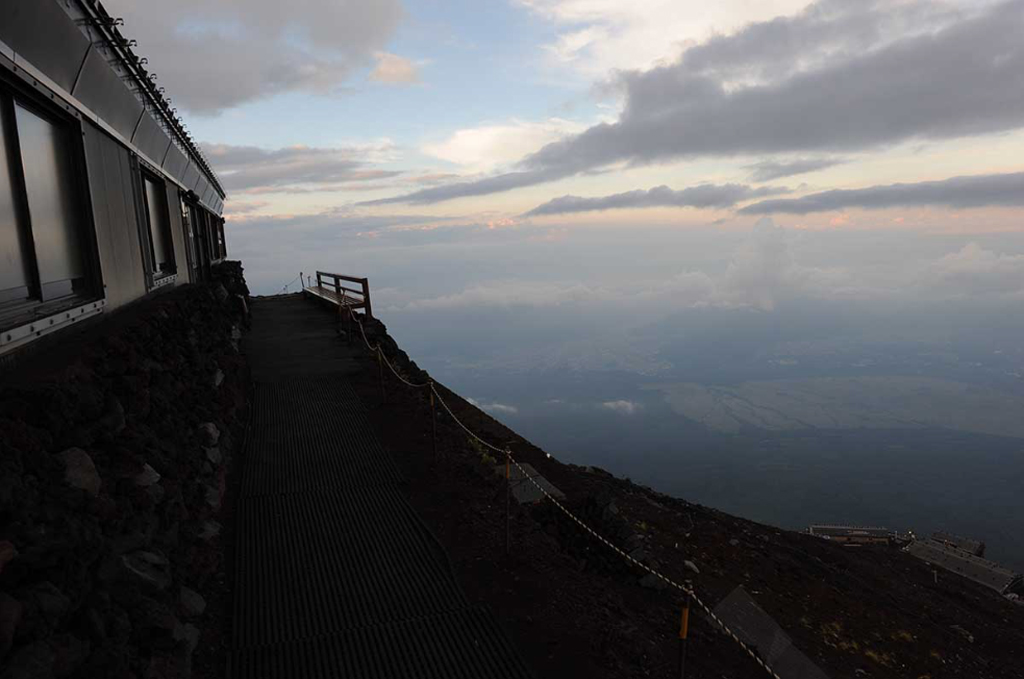

As soon as the sun goes down, the temperature plummets. The city lights of Fujiyoshida begin to twinkle below us and it’s time to turn in. Tomorrow we’ll make it to the summit.
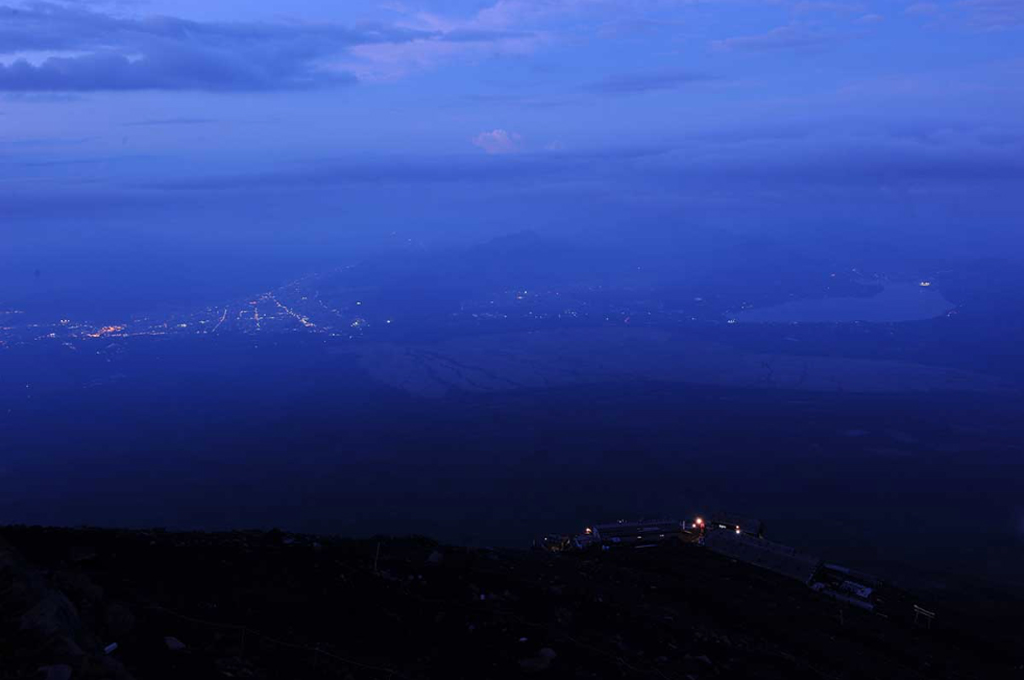
Day 2 – From Our Mountain Hut Lodgings to the Summit
Although we did technically spend the night in a mountain hut, it’s 2:00 in the morning when we set off for the summit, so it wasn’t much of a night’s sleep. This would normally be considered quite a late time to set off but since our hut, the Goraikō-kan, is the nearest one to the top of the mountain, we don’t have quite as far to climb.
Further down the mountain, a long procession of climbers marches towards to the top, headlamps glowing in the dark, all intent on witnessing the rising of the sun. Fuji’s climbing trails are at their most congested in the middle of the night.
Expecting the trails to be crowded, we’ve left ourselves plenty of time. But even so, we’re surprised at just how many climbers there are. We climb without speaking, dust swirling up from the trail, for around two and a half hours, overtaking a number of what appear to be tour groups. At last we reach the torii archway just below the summit. Passing under the archway, we’re finally at the top!
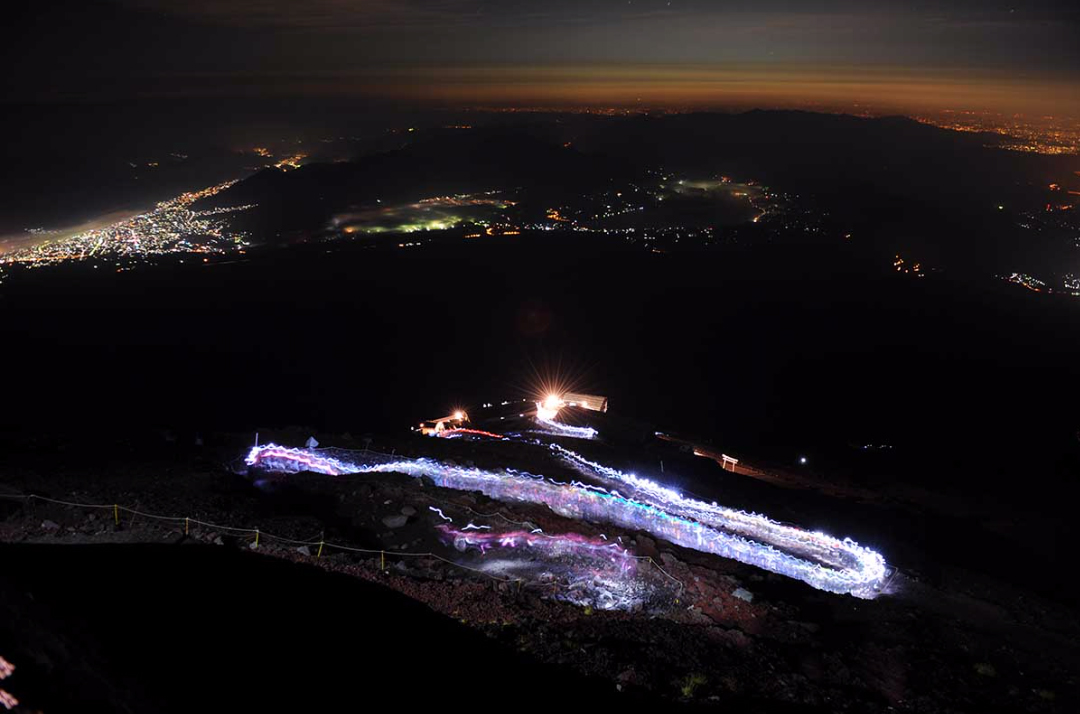
Faces towards the rising sun, all earthly cares are washed away
The Yoshida Trail reaches the summit on the east side of the mountain, offering a commanding view of the sunrise. It’s cold now that we’ve stopped and we rub our hands to try and keep them warm as we wait for around an hour. The eastern skies slowly begin to take on a reddish hue. Then the sun appears from behind a layer of clouds and a dazzling light hits our eyes. Spontaneous cries of joy erupt from here and there in the crowd. Other climbers stand with their palms pressed together in prayer. Overwhelmed by a sense of the sublime, I too feel an urge to pray.
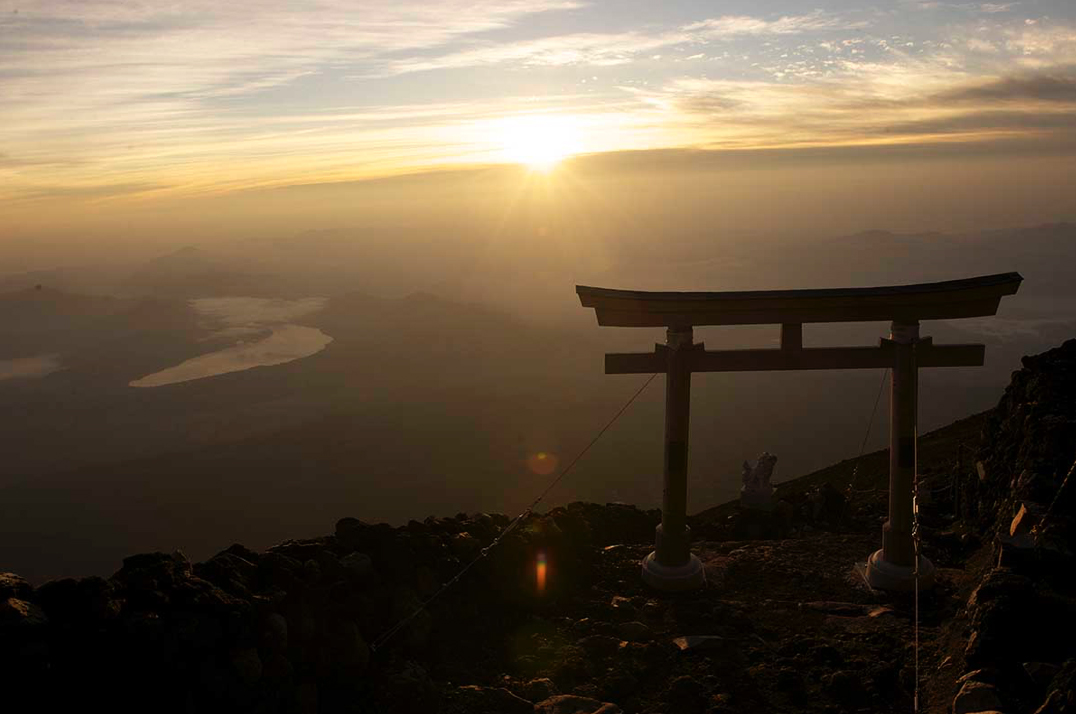
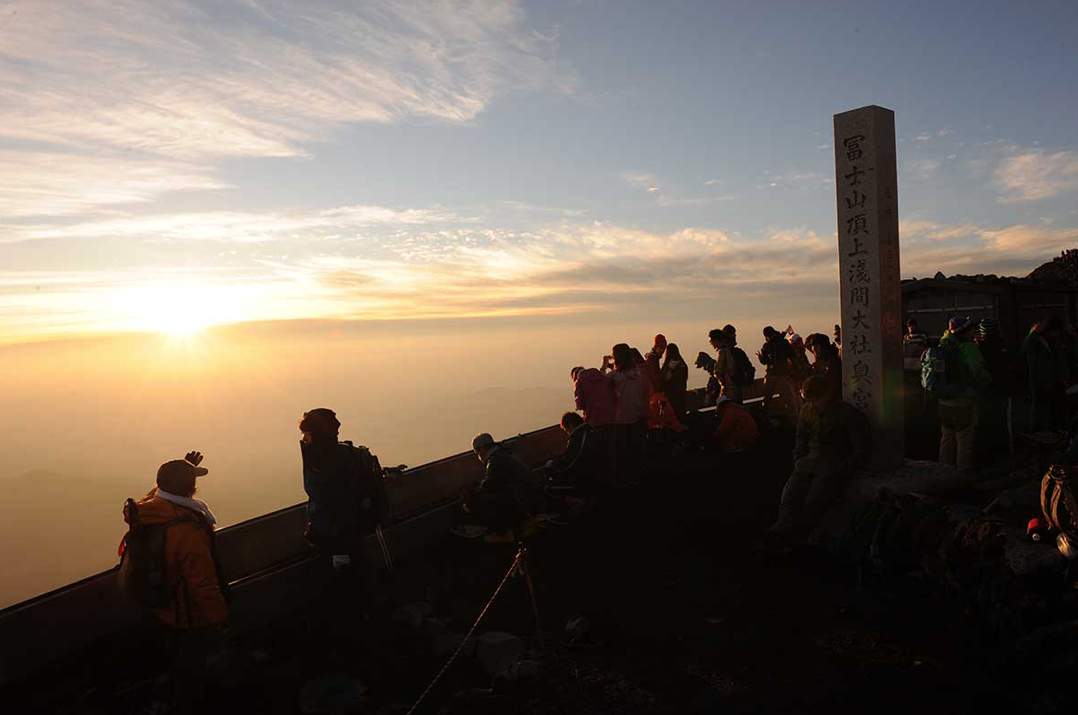
Our surroundings become lighter and morning reveals a magnificent sea of clouds laid out below us. I feel as if I’m walking on air! As the sun climbs higher and the day gets brighter we can see out over the distant mountains. If you still have the strength, it’s definitely worth walking around the perimeter of the crater. When we get around to the western side of the crater, we’re rewarded with the wonderful sight of the ‘shadow Fuji’, the graceful contours of the mountain clearly outlined on the landscape below.
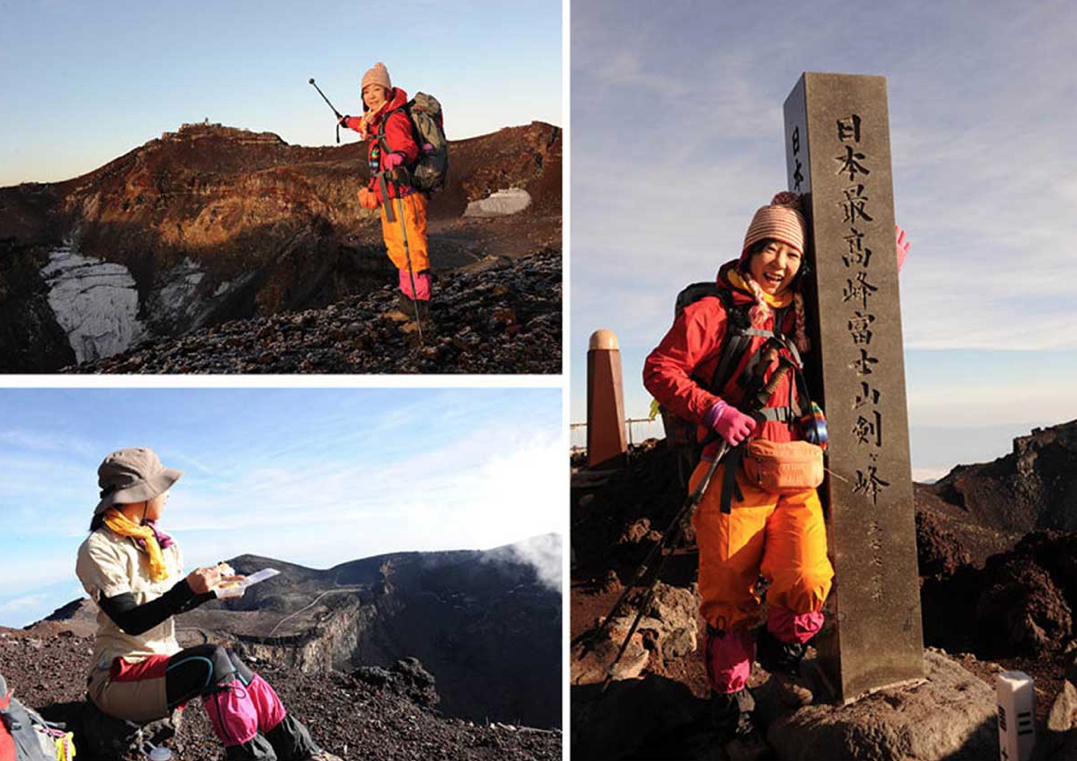
After walking about 30 minutes around the rim of the crater we come to a fortress-like structure on top of the rocks. This is the former Mt Fuji Weather Station at Kengamine, the highest point on the mountain. We’ve finally made it to the highest point in Japan!
Then, after walking around the crater for about an hour and a half, we come back to the head of the Yoshida Trail.

Time to bid farewell to this special world
It’s 8:00 in the morning and time to start heading down the mountain. We return down a different path from the one we came up, this one a series of giant S-bends snaking their way down the mountain. We proceed down the mountain in silence. Progress is quick but descending is very hard on the legs. I keep feeling as if my knees will give way under me.
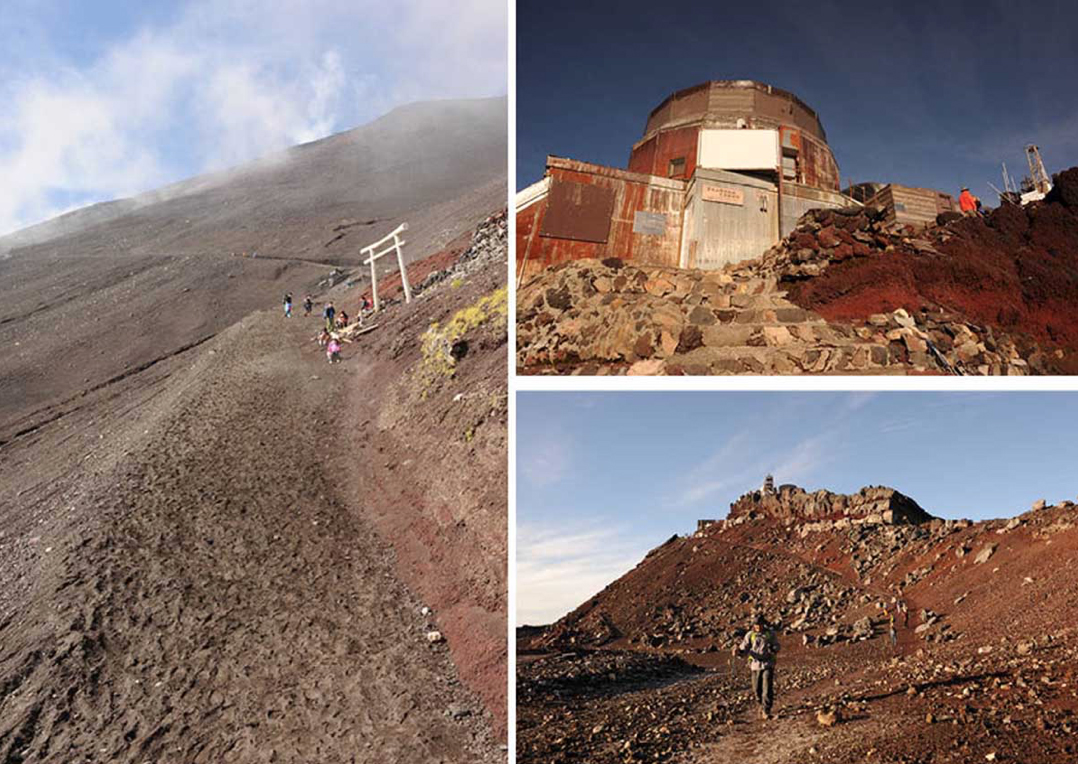
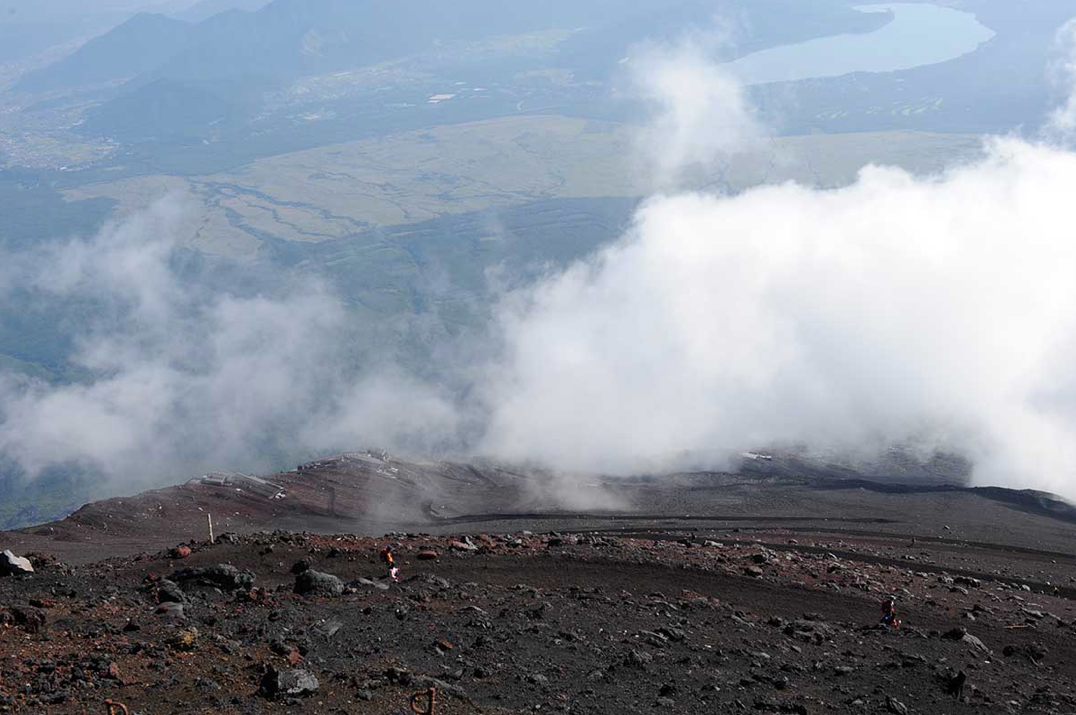
Thoughts swirl around in my head as I walk in silence – an inner dialogue begins. Climbing Mt Fuji seems somehow like a metaphor for life; a process of setting goals and achieving them, only to realise there’s still more to be done!
Trudging slowly down the mountain, one foot in front of the other, it takes us about three hours to arrive safely back at Fuji Subaru 5th Station.








